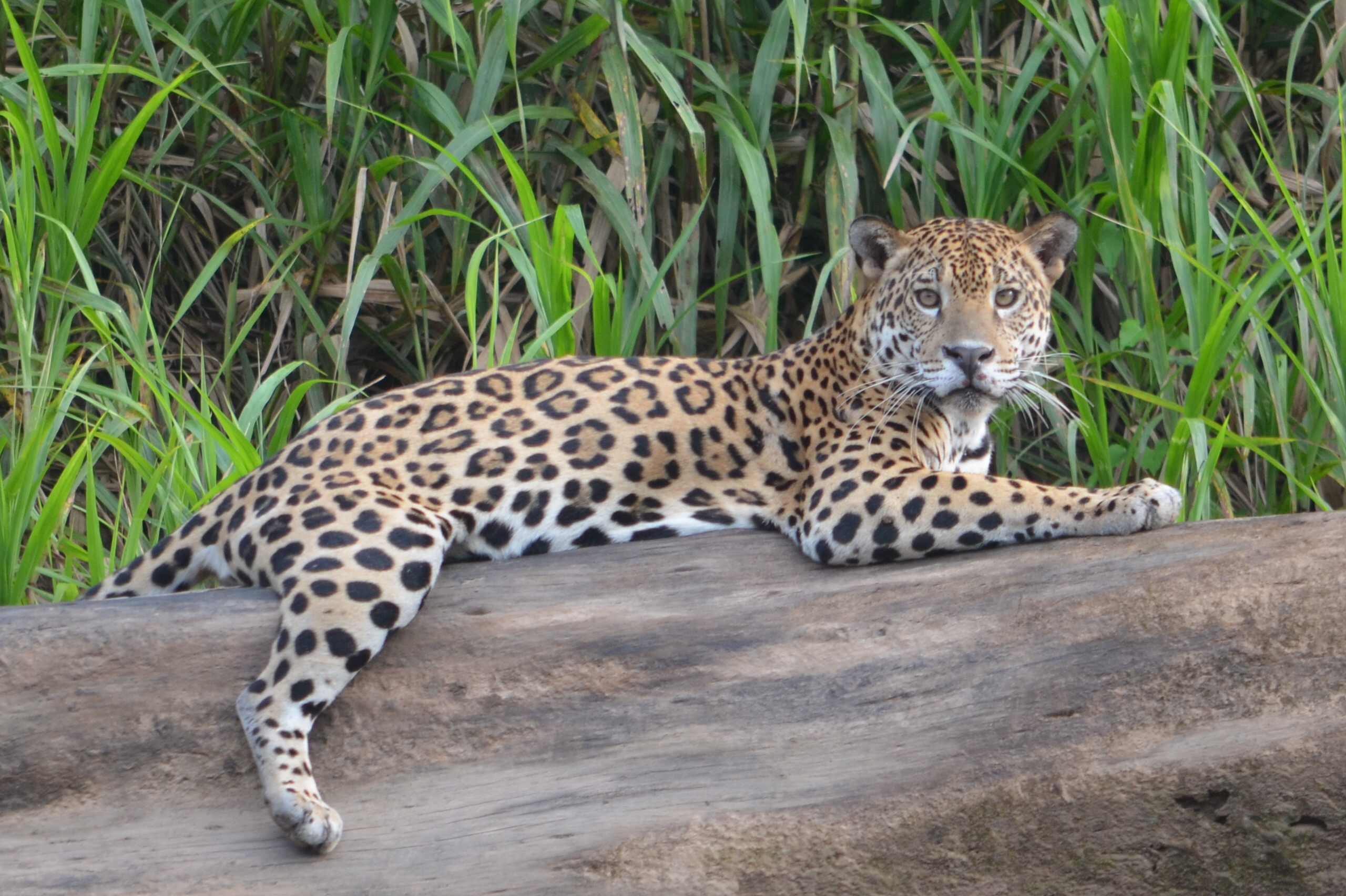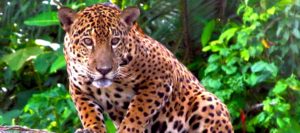Can you spot the Peruvian Jaguar?
What’s black and orange, covered in spots and incredibly hard to see? A Jaguar. In Peru, which is home to many of the world’s Jaguars, this large cat goes by the name “otorongo”, or beast. And rightly so – the jaguar is the most powerful predator in the Americas.
Although these creatures are difficult to spot, you might see one lounging on the riverbed, or splayed out on a log in our Nii Kaniti project area in Central Peru, where lush flora and fauna provide the ideal habitat for the Jaguar. The 127,000 hectares of Nii Kaniti sit on the edge of the Amazon Rainforest in the Ucayali region, known for its rich soils and diverse species of plants and animals. This biodiversity hotspot offers Jaguars an abundance of prey, which it stalks using its incredible sense of hearing and smell. Jaguars are water lovers, and can be found swimming in the Ucayali River of Nii Kaniti – one of the Amazon River’s major tributaries.
Devastatingly, Jaguars are rapidly disappearing in the Americas due to habitat loss, habitat fragmentation and human-wildlife conflict. In the region surrounding Nii Kaniti, land invasions for ‘slash and burn’ agriculture and land grabbing, illegal use of forest resources and low-productivity agriculture is causing deforestation and forest degradation. With Jaguars earning a rating of ‘near-threatened’ by the IUCN, protecting habitat for these creatures is more critical than ever.
The Nii Kaniti project works to do just this. By funding conservation efforts and supporting local communities in the transition to sustainable livelihoods, the project is conserving critical Jaguar habitat and providing incentives to protect and regenerate the environment, rather than destroy it. This is creating a region of sustainable productivity and protecting crucial habitat and biodiversity. For now, at least, in Nii Kaniti, the Jaguar is here to stay.
Learn more about our Nii Kaniti project here.

